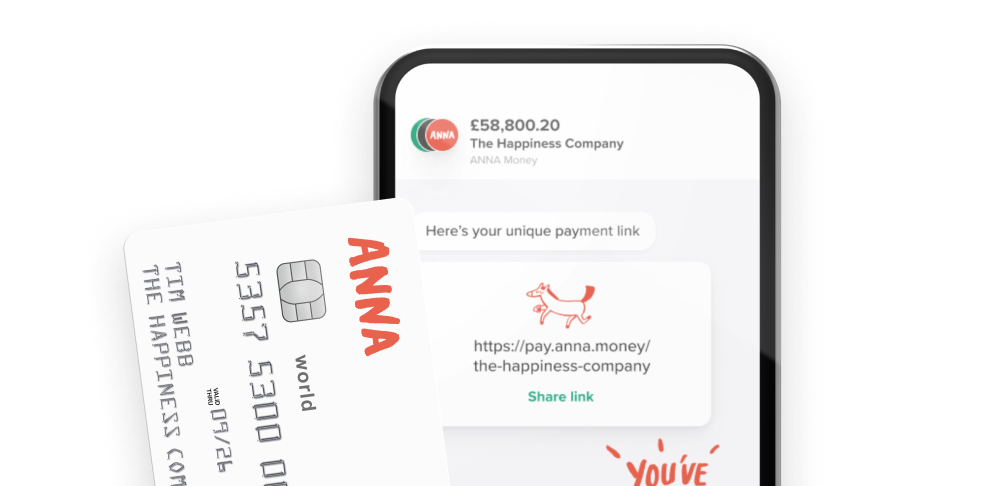Learn what is a charge on Companies House and understand how it protects lenders, affects your assets, and shapes your business decisions.


- In this article
- What is a charge on Companies House?
- How do charges work?
- What are the different Companies House charge types?
- How to find a company charge on Companies House
- Why charges matter for your business
- How to remove or “satisfy” a charge
- Can a charge be removed automatically?
- What happens to charges if your company is dissolved?
- How charges fit into your company’s financial strategy
- Example: How a charge works in real life
- Here’s how ANNA can help with your Companies House charges
Understanding charges is essential not just for lenders, but also for business owners, accountants, company secretaries, and prospective investors. Whether you’re borrowing funds or granting credit, knowing how charges work, and the consequences of (mis)registering them, can make or break your position.
All of this can get a little confusing. So if you’ve found yourself asking the question - what is a charge on Companies House? - don’t worry. In this article, we’ll explain what a charge on Companies House means, how it works, how to register and manage a charge, and what risk lies in getting it wrong. Let’s dive right in.
What is a charge on Companies House?
A charge is a form of security interest. It’s a promise that if the company can’t repay a debt, the lender can claim specific assets to cover what’s owed.
Think of it like a mortgage, but it can apply to almost anything a company owns: property, machinery, vehicles, intellectual property, stock, even receivables.
The company doesn’t lose ownership of the asset while things are going fine. But if it defaults on the debt, the lender has the right to step in and recover value from those charged assets.
Under UK law (specifically the Companies Act 2006), many types of charges must be registered at Companies House. Failing to do that can cause serious problems for both parties - especially if the company later goes into insolvency.
For the borrower, it’s often a condition of getting a business loan or credit facility. The charge doesn’t usually affect day-to-day operations, but it’s public information that appears on your company’s Companies House record.
How do charges work?
When a company borrows money, the lender may ask for security. Once both sides agree and the loan is finalised, the lender must register the charge with Companies House within 21 days of its creation.
This registration process creates an official record - anyone checking your company’s file can see the charge, what assets it covers, and when it was created.
If the loan is later repaid, the company (or lender) should also register a “satisfaction of charge”, showing that the debt has been settled. It doesn’t get updated automatically - so good bookkeeping is key here.
💡 Tip: Always make sure your lender files the satisfaction once you’ve cleared the loan. An old, unsatisfied charge can make your business look riskier to future lenders or investors.
What are the different Companies House charge types?
There are two key types of charges you’ll see on Companies House: fixed and floating. They both act as security, but they cover different kinds of assets and work slightly differently.
| Type of Charge | What It Covers | Can You Sell the Asset? | Common Examples |
| Fixed charge | Specific assets (property, vehicles, machinery) | No - you need lender’s permission | A mortgage on business premises |
| Floating charge | Changing assets like stock, cash, or receivables | Yes - until the charge “crystallises” | Overdraft or revolving credit secured on all assets |
1. Fixed charges
A fixed charge is tied to a specific, identifiable asset. For example, if your business owns an office building and you take a loan secured against it, that’s a fixed charge.
You can’t sell or transfer that property without the lender’s consent, because it’s locked as security until the loan is paid.
2. Floating charges
A floating charge is more flexible. It usually covers all the assets that fluctuate over time, like your inventory, raw materials, bank balance, etc.
You can continue to buy, sell, or trade those assets in the normal course of business.
But if your company defaults or enters liquidation, the floating charge “crystallises”. That means it converts into a fixed charge over the assets held at that point, and the lender can step in to recover what’s owed.
How to find a company charge on Companies House
You can view all registered charges for any UK company for free. Here’s how:
1. Go to companieshouse.gov.uk
2. Search for the company name.
3. Select the “Filing history” or “Charges” tab.
You’ll see a list of charges, including:
- Status: Active or satisfied
- Creation date: When the charge was registered
- Charge holder: The lender’s name
- Details: Assets covered by the charge
Each entry also includes downloadable PDFs of the official forms and legal documents.

💡 Tip: If you’re thinking of working with or investing in a company, checking its charges is a smart first step. Lots of active charges might signal that the company is highly leveraged or dependent on external financing.
Why charges matter for your business
Charges aren’t just legal paperwork - they have real implications for your company’s financial flexibility and reputation.
Here’s why they’re important:
1. They affect your ability to borrow more
Lenders use your Companies House record to assess risk.
If your company already has multiple fixed or floating charges, a new lender may be less willing to provide additional funding or may ask for higher interest rates.
2. They can affect ownership of assets
With a fixed charge, you can’t freely sell or transfer the charged asset without approval. That can limit flexibility if you want to restructure or sell part of your business.
3. They’re visible to everyone
Charges are public - potential clients, partners, or investors can see them. That’s why you should focus on managing charges carefully and staying compliant with regulations - to keep your business profile healthy.
4. They determine who gets paid first if things go wrong
If your company ever goes into liquidation, charge holders (secured creditors) get priority when the company’s assets are distributed. Fixed-charge lenders are paid first, then floating-charge holders, and finally unsecured creditors.
How to remove or “satisfy” a charge
Once your company has fully repaid a loan, don’t forget to officially clear the charge from your Companies House record. If you don’t, it’ll stay visible indefinitely - even though the debt is long gone. That can make your business look more indebted or higher risk than it really is.
Here’s what to do:
1. Confirm the loan is settled
Ask your lender to provide written confirmation that the loan has been repaid in full.
2. File form MR04 with Companies House.
This form, officially called a Statement of Satisfaction of a Charge, tells Companies House that the charge no longer applies. You or your lender can submit it online or by post.
3. Wait for the update
It usually takes a few working days for Companies House to process the form and mark the charge as “satisfied.” Once that’s done, your company record will show the debt as clear.
If there’s a dispute - for example, if a lender doesn’t file the satisfaction after you’ve repaid the loan, you can upload supporting evidence to Companies House. While they won’t mediate between you and the lender, they’ll make a note on your record to clarify the situation.
Can a charge be removed automatically?
Not usually. Even when a loan is fully repaid, a charge won’t disappear automatically. It must be officially updated as “satisfied.”
Some lenders handle this process for you as part of closing the loan, but others expect the company to do it. If you’re unsure, log into your Companies House profile and check the “Charges” section to confirm everything is up to date.
💡 Tip: Keep a simple spreadsheet or tracker listing all your company’s charges, repayment dates, and lender contacts. It’ll make it much easier to stay organised and ensure every cleared loan is properly removed from public record. Or simply use AI tools to streamline everything.
What happens to charges if your company is dissolved?
If your company is dormant, struck off, or dissolved, active charges don’t just vanish.
The lender still technically holds rights over the charged assets.
If the company is later restored to the register, those charges come back into effect.
If the company isn’t restored, the lender may still take action to recover their security through the courts.
That’s why it’s crucial to clear all charges before dissolving a company or changing shares - it prevents future complications.
How charges fit into your company’s financial strategy
Charges aren’t necessarily bad - they’re just tools. Used wisely, they can help your business grow by securing better loan terms.
Here’s how to make them work in your favour:
- Negotiate flexibility: When taking a loan, discuss whether a floating charge might work better than a fixed one for your business model.
- Keep transparency: Always inform potential investors about existing charges - it builds trust.
- Monitor your record: Make it a routine task, just like checking your credit score.
- Use charges strategically: A single, well-managed charge can be better than multiple small ones scattered across different lenders.
Example: How a charge works in real life
Let’s imagine BrightTech Ltd, a small tech company that needs funding to expand.
To raise £150,000, BrightTech takes out a loan from its bank. The loan is secured by a fixed charge on the company’s office building - meaning the property acts as collateral until the debt is fully repaid.
Once the loan agreement is signed, the bank registers the charge with Companies House within the required 21 days.
From that moment, anyone searching for BrightTech online can see the charge listed as “Active” on the company’s public record.
Fast forward two years - BrightTech has grown, and the loan is now paid off in full.
The bank files form MR04 (Statement of Satisfaction of a Charge) with Companies House to confirm the debt is cleared.
Within a few days, the entry on BrightTech’s profile updates to “Satisfied”, showing that the loan has been repaid and the property is no longer tied to the lender.
To future investors and lenders, this tells a positive story: BrightTech used financing responsibly, repaid it on time, and now owns its assets outright.
Here’s how ANNA can help with your Companies House charges
ANNA is all about making small business admin, banking, and compliance simple - and charges on Companies House are part of that same ecosystem.
Here’s what ANNA can do for your business:
1. Companies House monitoring and updates
ANNA can easily help you keep tabs on your company details - like charges, filings, and deadlines, all from one place. If a charge hasn’t been marked as satisfied, ANNA can remind you to check or update it.
2. Smart notifications
Just as ANNA reminds you about tax deadlines or invoices, it could help alert you when a charge needs registering or clearing, keeping your business records accurate.
3. Business finance management
With ANNA’s business account and bookkeeping tools, you can have a better understanding of your loans, credit facilities, or asset financing.
4. Building a trustworthy business profile
A clean Companies House record (with all charges properly satisfied) boosts credibility with lenders and clients - something ANNA can help with by promoting financial transparency and good admin habits.
5. Integrated admin tools
ANNA’s suite of tools - from automated Self Assessment support to company registration - helps you with keeping documents in order, tracking repayments, and ensuring your public record stays clean.
With ANNA, you can stay on top of your Companies House charges and ensure your company remains compliant, financially healthy, and ready for growth.
Read the latest updates
You may also like
Open a business account in minutes





![140 Creative Tutoring Business Names [Ideas & Examples]](https://storage.googleapis.com/anna-website-cms-prod/medium_Cover_3000_Landscaping_Business_Names_Creative_Name_Ideas_d7964059b3/medium_Cover_3000_Landscaping_Business_Names_Creative_Name_Ideas_d7964059b3.webp)

![How to Start a Self-Employed Business in the UK [Guide]](https://storage.googleapis.com/anna-website-cms-prod/medium_Cover_3000_Landscaping_Business_Names_Creative_Name_Ideas_fe5b6edef1/medium_Cover_3000_Landscaping_Business_Names_Creative_Name_Ideas_fe5b6edef1.webp)
![How to Start an Electrician Business in the UK [Guide]](https://storage.googleapis.com/anna-website-cms-prod/medium_Cover_3000_How_to_Start_a_Car_Detailing_Business_Successfully_74488a6268/medium_Cover_3000_How_to_Start_a_Car_Detailing_Business_Successfully_74488a6268.webp)





![Can Sole Traders Have Employees? [Rules Explained]](https://storage.googleapis.com/anna-website-cms-prod/medium_cover_3000_Can_Sole_Traders_Have_Employees_Rules_Explained_0a5a2f5654/medium_cover_3000_Can_Sole_Traders_Have_Employees_Rules_Explained_0a5a2f5654.webp)




![How to Start a Graphic Design Business in 2026 [Full Guide]](https://storage.googleapis.com/anna-website-cms-prod/medium_Cover_3000_How_to_Start_a_Graphic_Design_Business_in_2025_d8d412cdf5/medium_Cover_3000_How_to_Start_a_Graphic_Design_Business_in_2025_d8d412cdf5.webp)





![How to Start an Event Planning Business [Full UK Guide]](https://storage.googleapis.com/anna-website-cms-prod/medium_Cover_3000_How_to_Start_an_Event_Planning_Business_in_the_UK_9e78d91fa0/medium_Cover_3000_How_to_Start_an_Event_Planning_Business_in_the_UK_9e78d91fa0.webp)
![130+ Creative eCommerce Business Name Ideas [2025 Examples]](https://storage.googleapis.com/anna-website-cms-prod/medium_Cover_3000_130_Creative_e_Commerce_Business_Name_Ideas_2025_e2e8cb8014/medium_Cover_3000_130_Creative_e_Commerce_Business_Name_Ideas_2025_e2e8cb8014.webp)